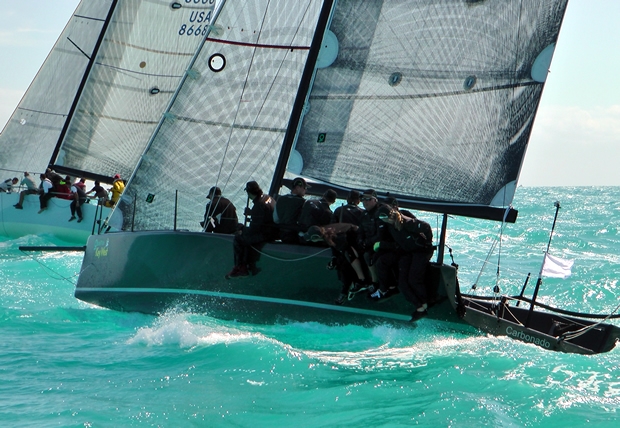
McConaghy 38 - carbon fibre skimming dish sportsboat
With the Farr 40 class now in decline after 15 years as the most popular and competitive one design in its size range, so over the last year several new offerings have come onto the market each hoping for a slice of this market.
Last year we looked at the Ker 40 and Soto 40. Since then the Farr 400 and the McConaghy 38 have also been launched, both racing this week at Quantum Key West Race Week.
What is perhaps most interesting is just how much these four boats differ. While the intention is for it to become a one design, the Ker 40, with its characteristic giant flare aft, has already found success racing under IRC and, like the Soto 40, is not built in carbon fibre. The Farr 400, with its powerful-looking bow, obviously benefits from having the finest pedigree in design terms, following the 40 and all the other successful one designs emanating from the Farr office.
| Column1 | Ker 40 | Farr 400 | McConaghy 38 | Soto 40 |
| LOA | 12.2 | 11.8 | 11.35 | 12.3 |
| Beam | 4.15 | 3.42 | 3.5 | 3.75 |
| Draft | 2.6 | 2.9 | 2.8 | 2.6 |
| Disp | 4800 | 4130 | 3200 | 4200 |
| Crew weight | 10 | 8 | 600 | 770 |
| IM | 16.15 | 15.6 | 15.9 | 16.05 |
| J | 4.75 | 4.45 | 4.63 | 4.85 |
| P | 16.6 | 16.15 | 16.5 | 16.3 |
| E | 5.3 | 5.8 | 5 | 5.8 |
| IRC | 1.196 | 1.23 | 1.243 (trial) | ? |
| Construction | E-glass, Core cell core, epoxy resin infusion, autoclaved prepreg carbon rudder stock and bow pole. Iron keen fin, lead bulb | Carbon/epoxy | Carbon fibre/E Glass, Core cell core, vinylester resin infusion, autoclaved prepreg carbon keel fin, rudder and stock. Lead bulb | E-glass, CoreCell and epoxy resin with carbon fibre re-enforcements. Infusion vacuum-bagged. Carbon rudder and stock. |
| Cat 1 | Cat 2 | Cat 2 | ? | |
| Designer | Jason Ker | Farr Yacht Design | Harry Dunning | Javier Soto Acebal |
| Builder | McConaghy China | Premier Composite Technologies, Dubai | McConaghy China | M Boats, Argentina |
| Price | US$298,000 | US$ 395000 | US$ 248,000 | Euro 240,000 |
| ex delivery from China, electronics and sails | ex delivery from Dubai, sails and electronics | ex delivery from China, electronics and sails | ex delivery from Argentina, sails, electronics |
Newest kid on the block is the McConaghy 38, which with its ultra-low freeboard appears to be more inshore-orientated but given its vital statistics, especially power to weight, is likely to have the performance edge on the opposition, but is expected to be less IRC-friendly.
While five Farr 400s are competing at Quantum Key West this week, Carbonium is the first McConaghy 38 to arrive in North America. Roll out of the 38 was set back from an anticipated launch date a year ago when, after the first hull had been shipped from McConaghy’s operation in China to Sydney and was then en route to be launched for the first time, the truck driver unfortunately hit a bridge with the boat.
Carbonium is hull no5 of the McConaghy 38s, the first four having found homes in Australia and Hong Kong. Four more have been sold since. One has gone to Australian James Neill, who previously campaigned his overpowered Reichel Pugh 30 footer Cone of Silence in the Transpac.
Owners of Carbonium are keen Canadian sailors Rob and Sandy Butler (and son Riley) who herald from Collingwood on Lake Huron. Back in the 1970s, Rob was an accomplished Laser and Finn sailor, a holder of the Laser North Americans title and member of the Canadian Finn squad. However he subsequently had a family and put sailing on the back burner for 20 or so years. He was enticed back on to the water in the early 2000s by some friends and, fully bitten by the sailing bug once again, has since owned a J/80, a J/105, a Melges 24 and a Beneteau 10R (34.7), which they successfully campaigned out of Toronto racing with their ‘pro’ Martin Kullman. In addition to the 38, they still campaign a Melges 20 in Florida and Toronto.
So why the 38 now? “I think it was mostly we wanted the excitement and thrill of sailing the [Melges] 24 and the 20 in a larger boat,” says Butler. “The Beneteau is a nice boat to sail and cruise, but it is just isn’t exciting, especially off the wind and it is not performance racing and we wanted some performance racing. So we said ‘let’s get a more serious thoroughbred racer, something that will go fast and have the same excitement off the wind as a 24 or a 20, and something that will be easy to trailer around.”
After Key West they will put the 38 on its trailer and move it north to St Petersburg, FL and then back to the Lakes for the Chicago-Mackinac race, possibly via Charleston Race Week and Block Island Race Week.
So why the 38 and not the competition? “This is a very light – quite a bit lighter than the Farr 400 and the sail area is about the same,” says Butler. “So when it comes to get up and go, acceleration and real excitement, we thought this boat would deliver on that more than the 400. And this is a sexy machine that can really rip it up.”
Butler says that they would like to race the McConaghy 38 in a one design fleet (as they have with the other boats they have owned) but he acknowledges that this will take time as the class develops in North America. “In the meantime we will have a blast around with a lot of excitement.”
The McConaghy 38 has been designed by Newport, RI-based Harry Dunning, who has done time in both the Farr and Reichel Pugh offices and for the last few years has been Chief Designer for Mascalzone Latino for the 32nd and for the 34th America’s Cups, up until last summer when Vincenzo Onorato wound down his AC team.
The concept of the McConaghy 38 was developed by Dunning after the 2007 Cup, although the idea of it was sown by an owner Dunning regularly sailed with, who made the simple but astute observation – on a race boat what is the point of having a head and a galley you’re never going to use that just cost money and sap performance?
The tie up with McConaghy came sometime later, Dunning have worked on numerous projects over the years with the Australian race boat builder from maxZ86s to Alfa Romeo to an Optimist dinghy.
While Dunning penned the 38, he had specialist help in the form of Alinghi/Oracle engineer Dirk Kramers who looked after the structure and Alinghi/Oracle mast specialist Kirst Feddersen, who designed the spars.
Comparing the McConaghy 38 at the dock alongside the Farr 400, most noticeable is how low her freeboard is. This, combined with being a fraction wider, make the 38’s lines extremely sleek - hence her proud owner’s comments about her looks. When sailing, the 38 is one of the most skimming dish-shaped boats we have seen since Mike Plant’s pre-IMOCA rule Open 60 Coyote.
“Someone said to me – the freeboard might be too low,” says Dunning. “The freeboard is lower than a lot of other boats, but that doesn’t mean it is too low...” The designer adds that the aim of the hull shape is, as the boats heels, for it to generate considerable form stability for very low wetted surface area.
Aside from a larger percentage of the boat being built in carbon than the opposition – even the keel foil is carbon (as it is on the Melges 24 and 32) - the lack of freeboard is one reason that the boat firstly weighs so much less than the completion, but also costs so much less – there is simply less boat.
But inevitably low freeboard has its downsides. Moving around down below requires the crew to be part contortionist and inevitably the ride is wet, although when we went out on her it wasn’t nearly as wet as we had anticipated with green water coming over the bow and back into the cockpit on about five occasions during a two hour sail in around 12 knots of wind and the lumpy uneven sea you typically get in the shallow waters off Key West.
Carbonium’s crew survived her delivery down from St Petersburg in 30 knots on the nose. While the ride was extremely unpleasant, the consensus was that they were impressed with the strength of the boat.
Worryingly, considering the lack of freeboard, a number of McConaghy 38 owners seem keen to take their new steeds offshore. “There is someone talking about doing the Bermuda race on it and James Neill wants to take his on the Transpac, but then he took his 30 footer on the Transpac a couple of times...” advises Dunning.
So the 38 can be equipped to comply with ISAF Offshore Special Regs Cat2 (ie ‘Races of extended duration along or not far removed from shorelines or in large unprotected bays or lakes, where a high degree of self-sufficiency is required of the yachts’). The Butlers intend to compete in some Cat2 events and so have equipped Carbonium with bunks and a Porta-Potty – although most of this kit has been removed for Key West. Of this group of 40 footers, only the Ker 40 comes compliant to Cat1.
Looking around the McConaghy 38, the mast has twin spreaders with slight curvature to them to maximise headsail size. We particularly liked the all-carbon fibre gooseneck.
“One of the places where we decided to spend the money was having high modulus carbon in the rig,” says Dunning. “It is a really stiff rig. They have done a beautiful job with it. We approached the rig in the same way as we did the boat. Less windage, weight and simplicity...”
The spars were built by McConaghy, the first they have built recently. Previously they have made carbon spars for some ACC boats, such as Spirit of Australia, plus the Farr 40s and Melges 20 they built.
Standing rigging is Navtec PBO. There are twin composite masthead backstays fitted with deflectors for when the fractional kites are used.
While the Ker 40 and Soto 40 have fixed (albeit removable) bowsprits, the 38’s is retractable, as it is on the Farr 400. Dunning points out that this makes life easier at the dock but also enables the bowsprit to be longer when sailing. Once the 38’s bowsprit is fully deployed, rather than being held out on a rope clutch, its inboard end drops into a trench, physically preventing the sprit from shifting aft when loaded up. The cross section of the sprit is oval rather than circular, as this is a better shape to withstand the side loads being placed on it by the genniker.
The boat is fitted with guardrails and smart composite profiled stanchions, while the foredeck has a carbon fibre toe rail around its perimeter. There is a well for the forestay, and a Cunningham arrangement for the jib, to encourage luff tension against the masthead lock.
The largish foredeck hatch is offset to port and, another nice McConaghy feature, is that this is fitted with a pneumatic seal to ensure watertight integrity. Nonetheless water does get down below and to deal with this, an automatic bilge pump is fitted, discharging into the cockpit. There is a basic drop line spinnaker take-down system but rather than have rollers, there is a smooth fairing on the inside of the foredeck hatch over which the kites pass as they are sucked below.
The deck is flush, with the tracks for the headsails running athwartships, with the normal arrangement of the headsail fairlead up/down control line running forward then back below deck and an inboard barber hauler. Upwind on Carbonium they cross sheet the jib sheets to the weather primary. However an unusual feature is that, rather have a dedicated track that would allow the spinnaker staysail to self-tack, instead they simply use a line running from beam to beam, just forward of the mast.
Either side of the hatch, that provides access down into the shallow black cavern below, is the pit area. Halyard clutches are recessed into the deck either side of the hatch, allowing the halyards themselves to run aft from the mast below deck. Additional lines for the pole in/out, Cunningham, etc neatly pass through the cockpit bulkhead.
In the cockpit there are just six winches – two primaries, two pit winches and two for the runners and there is no grinder, as features on the Farr 400. The main sheet and traveller disappear into the cockpit side, emerging at the mainsail trimmer’s feet.
Carbonium is fitted with tiller steering, but twin wheel steering is available as an optional extra.
The control line for the vang exits in the middle of the aft deck. “With this type of boat you hoist the kite and everyone goes aft,” says Dunning. “But we were putting the vang aft on IOR boats when I was working for Bruce Farr... You see these things come around.”
We went out for a brief sail on the boat in moderate conditions (around 12 knots) and as the video below indicates we did experience something of the ‘yee-haa’ planing downwind at high speed moment, even capturing on video Volvo 70-style green water coming into the cockpit on one occasion. One imagines the thrill factor will go up exponentially with the wind speed.
While lightweight, the 38 has a sizable T-keel slung under it and this combined with her wide beam make her very stable. Coming off a few waves her construction felt extremely stiff fore and aft – as borne out by the crew who delivered the boat to Key West on its own bottom upwind in 30 knots.
In a nutshell, on the positive side, the McConaghy 38 is an extremely good looking sailboat and downwind should prove herself to be the fastest of the new crop of 40ish footers – it is shame the McConaghy 38 and Farr 400s aren’t on the same start line at Key West as it would be good to nail this issue finally.
The 38’s performance, combined with having the lowest price tag within the group – US$ 248,000 (excluding delivery from China, sails and electronics) - makes for a very attractive package. However, some will not find its low freeboard to their liking and this will make the 38 more appealing to the inshore than offshore inclined. The 38 is also likely not to be the first choice of the four for an owner after a boat that is principally competitive under IRC (for this the Ker 40 would be hard to beat), although we wait to see how well the 38 fares against her rating.
In addition to the 38, designer Harry Dunning has a 43 footer on the go which is very similar in concept to the 38. He currently has three clients in the US interested in this, while he is also working on a 53ft version – a TP52 eater.
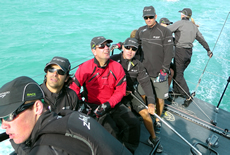 |
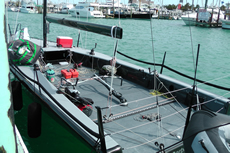 |
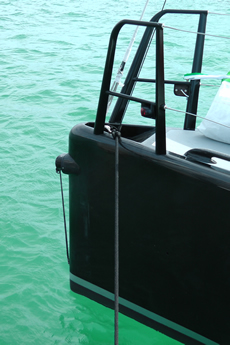 |
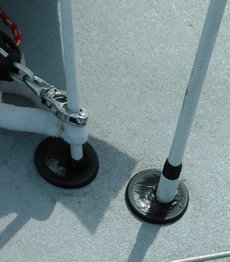 |
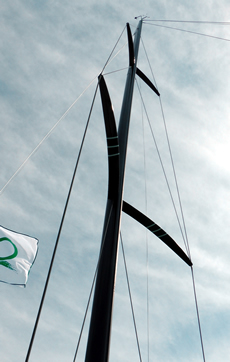 |
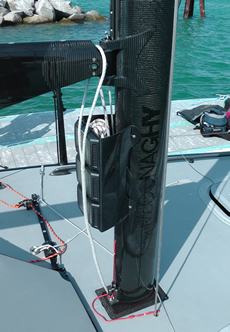 |
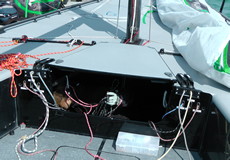 |
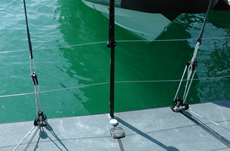 |
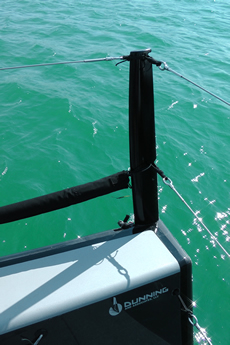 |
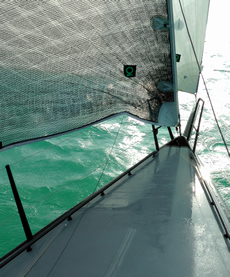 |
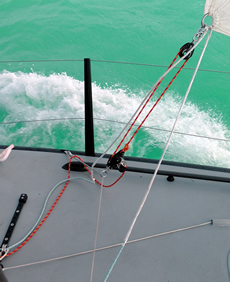 |
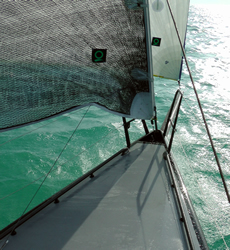 |
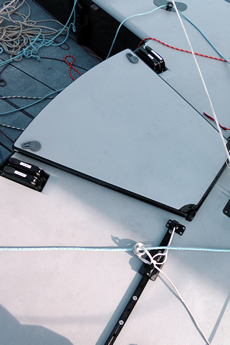 |
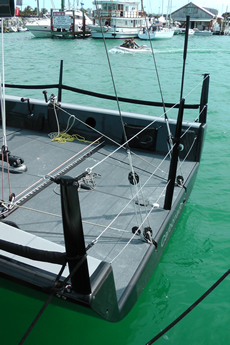 |
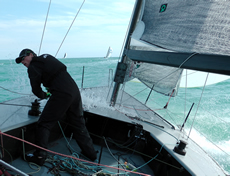 |
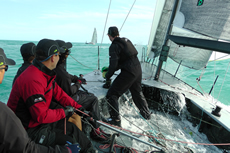 |
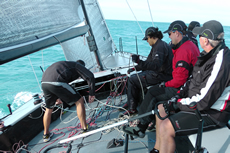 |
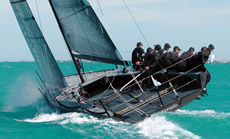 |
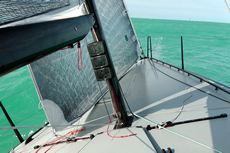 |
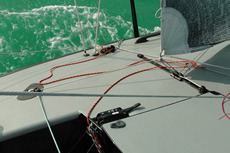 |
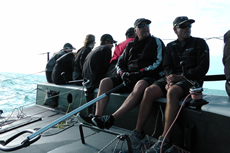 |
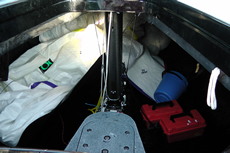 |
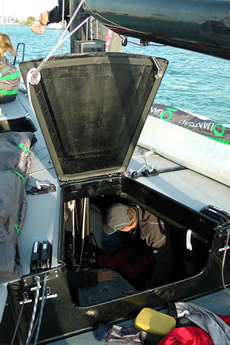 |
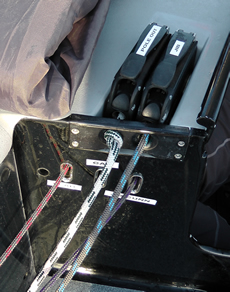 |
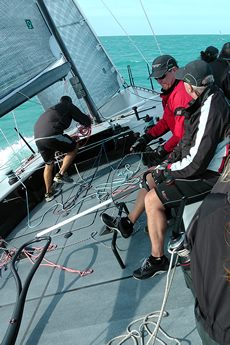 |
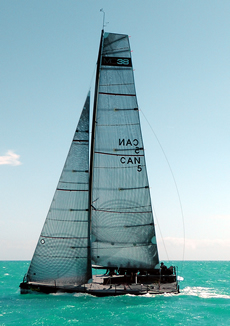 |
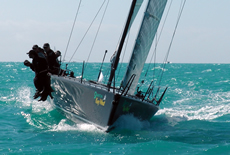 |
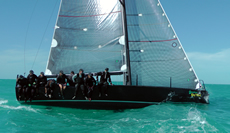 |
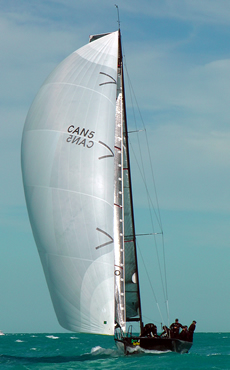 |
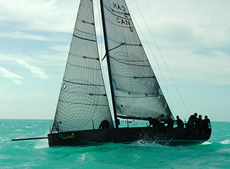 |
To see the video below in its full screen glory, click on the bottom RH button in the viewer.

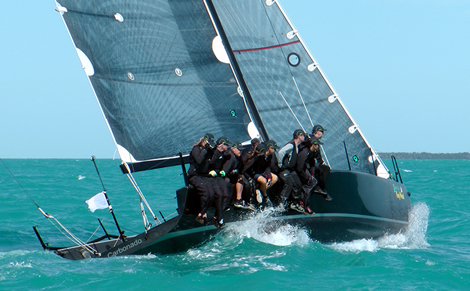
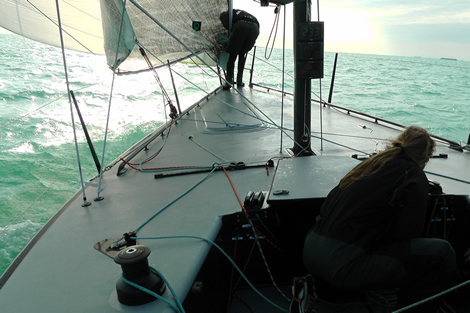
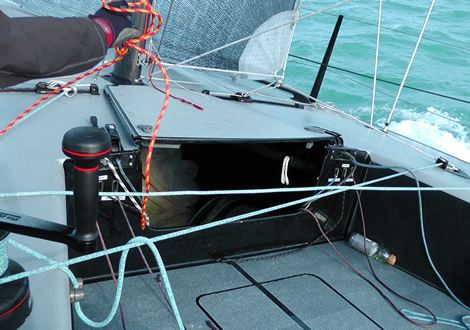







Latest Comments
physical_plant 21/05/2012 - 19:35
Strange, she carries the same sail number as a McConachy 38 by the name of Carbonado.James Boyd 24/01/2012 - 11:00
In fact the Melges 32 has one too...James Boyd 24/01/2012 - 10:58
Quite right. Well spotted. I'll change the article. Thanks. Jamesedfryer 23/01/2012 - 22:46
Doesn't the Melges 24 have a carbon keel fin?Add a comment - Members log in